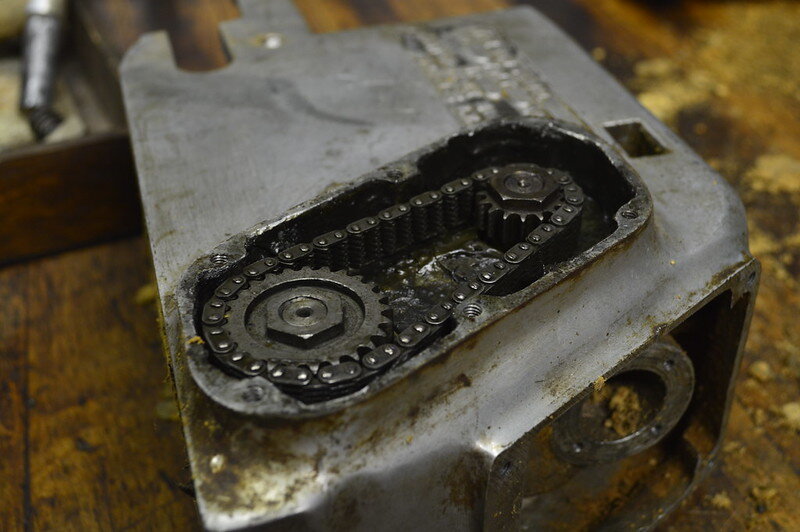
Our Mission:
Collecting and restoring the best power tools ever made
Offering repair and restoration services and information for:
Porter-Cable - Rockwell - Hutchinson - Mulliner Enlund
Syracuse Sander - Delta Milwaukee - Unit Electric
Welcome to Tool Valhalla
I’m James, and I’m obsessed with the products made by Porter-Cable and their history. To that end, I’ve spent the last two decades resurrecting power tools, stationary machines, and even lawnmowers and tractors built by Porter-Cable, Rockwell, Hutchinson, and other companies. Virtually every object in the workshop can be traced back to the original firm, from the massive Mulliner Enlund lathe that makes most of the unobtainable parts for my restorations to the Rockwell-Barnes Rock-A-File cabinet that houses my shop library.
I’m committed to the restoration, conservation, study, and use of hundreds of tools that bear the Porter-Cable name. Do you have a saw or sander that belonged to dad? I can help you pass it on to the next generation in working order. Are you the new owner of a great stationary belt sander, but don’t know what it needs to get up and running again? You can rely on me to put it to rights. I’ve worked on nearly every tool Porter-Cable has ever made, and I’m here to help.
I offer everything from basic repairs to complete restorations, repair advice and techniques, history and original price, and evaluation/appraisal services.
Tool Valhalla houses Porter-Cable and cousins germain to the tune of forty-four stationary machines and over one hundred and sixty power tools (as well as a riding mower, a tractor, and a chainsaw - it’s a big family). From the commonplace to the rarest of the rare, I’ve seen them, repaired them, and brought them back to life - and I can do the same for you.

My Porter-Cable S-1 when I got it; not much more than the five main castings, two of which were broken.

The S-1 after a lot of TLC. Quite literally as good as new.

This B-10 spent an awful long time someplace very damp.

B-10, after a full restoration. The missing aluminum from the front of the frame was replaced by welding in fresh material and fairing to shape on a belt grinder. Pretty good, no?

The quick change gear box of my beloved 1918 Mulliner-Enlund 14" engine lathe, Millicent. Without this workhorse, fabricating missing parts would be an insurmountable obstacle.

A rare bird- this Syracuse sander BS 20" bandsaw is the only known example of the original design, before Porter-Cable purchased the firm in 1922.
FAQs
How did you get into this?
I got into collecting Porter-Cable the honest way - by becoming a factory authorized repair technician at the tender age of twenty. One of my first tasks was to cull the bins of part donors; that’s where I found the 115 circular saw that would change the course of my adult life.
However, that’s a story for another time.
What’s so special about Porter-Cable?
Where do I start?
Porter-Cable is one of the longest surviving power tool manufacturers in the world. They are directly responsible for the invention and development of tools that completely changed the way work was done, from the belt sander and helical geared circular saw to the portable bandsaw and cordless drill.
Additionally, they were renowned for innovation, product quality, and even the regard the company had for the employees. During both world wars, they devoted the whole of their production capabilities to defense work, a claim few companies could make.
Porter-Cable can boast the longest-produced handheld power tool of all time, the legendary A-3 worm drive belt sander, as well as the iconic 100 router and the long-lived 505 finishing sander.
Porter-Cable will forever be an important chapter in the history of American industry.
Their tools are pretty neat looking, too.
How do you find the tools you restore?
Flea markets. Garage sales. FB Marketplace. Craigslist. Word of mouth.
When I started out, I found a lot of them through my job as a power tool repairman. It’s a bit like being an undertaker; they all come to me, eventually.
The best way, of course, is to tell everyone you know what it is you’re looking for - some of my most treasured machines were handed to me on a silver platter by someone who knew I was looking. Karma goes a long way with this approach, so be sure to respond in kind.
Where do you find parts?
I’ve been gathering parts donors for ages, so I have a sizable scrapyard, but one of the things I like best about Porter-Cable is their tendency to use a given part in as many machines as possible, so it’s not hard to source brushes, switches and the like.
Many parts can be salvaged with the techniques I’ll discuss elsewhere. Wherever possible, I prefer to rework an original part (what I call a sympathetic restoration), whether by welding a crack, piecing in new material, or resurfacing on the lathe or surface grinder. The technology of the period often lends itself to a number of methods.
When a piece is missing, it’s often possible to machine a new one or have a copy cast from another machine.
Some machines (okay, most machines) I rebuild have some combination of all of these tactics at work. Whatever it takes, you know?
Love always finds a way.







Book a Consultation
We’ll prepare a proposal and walk you through every step of the process.